It is quite easy to measure the illuminance of a light at a single point.
However, it’s not easy to measure lumens.
Lumen is unit for luminous flux. It means total quantity of visible light emitted by a lighting device.
I’ll show you how I measure lumens of lights below.
Contents
It’s not easy to measure total quantity of visible light
It is easy to measure the illuminance of a light at a single pinpoint.

The illuminance of a particular point can be measured easily with an illuminance meter like this one shown below.
This is the EM-9300SD measuring instrument I purchased in 2016.
However, a light illuminates a large area rather than a single point.

Now we are measuring the illuminance of two lights.
Suppose that their measured illuminance at a center illuminated point are the same.
In this case, the light with the larger illuminating area is judged to be brighter overall.

Then, how should we measure the total quantity of visible light emitted by those lighting devices?
One possible method is to place light-measuring sensors in multiple locations.
However, each light can have different illuminated area.
Even if the measurement results are obtained at multiple points, it is not easy to determine how to relate them to the total light quantity.

In addition, slight differences in distance and the orientation of the light sensor can significantly change the measured light intensity.
Thus, it is difficult to measure the total light quantity with this kind of illuminance meter
Measuring lumens (total luminous flux) with an integrating sphere
I use an integrating sphere to measure the total luminous flux (total luminous flux = lumens) of a light.
Integrating sphere is used to measure lumens. When light is illuminated in a sphere, the inside of the sphere is filled with a homogeneous brightness due to the reflection of light within the sphere.
With a sensor in the sphere, the light lumen value can be measured.

This is the integrating sphere. It’s a hollow steel sphere with a diameter of 50 cm (about 1.64 feet).
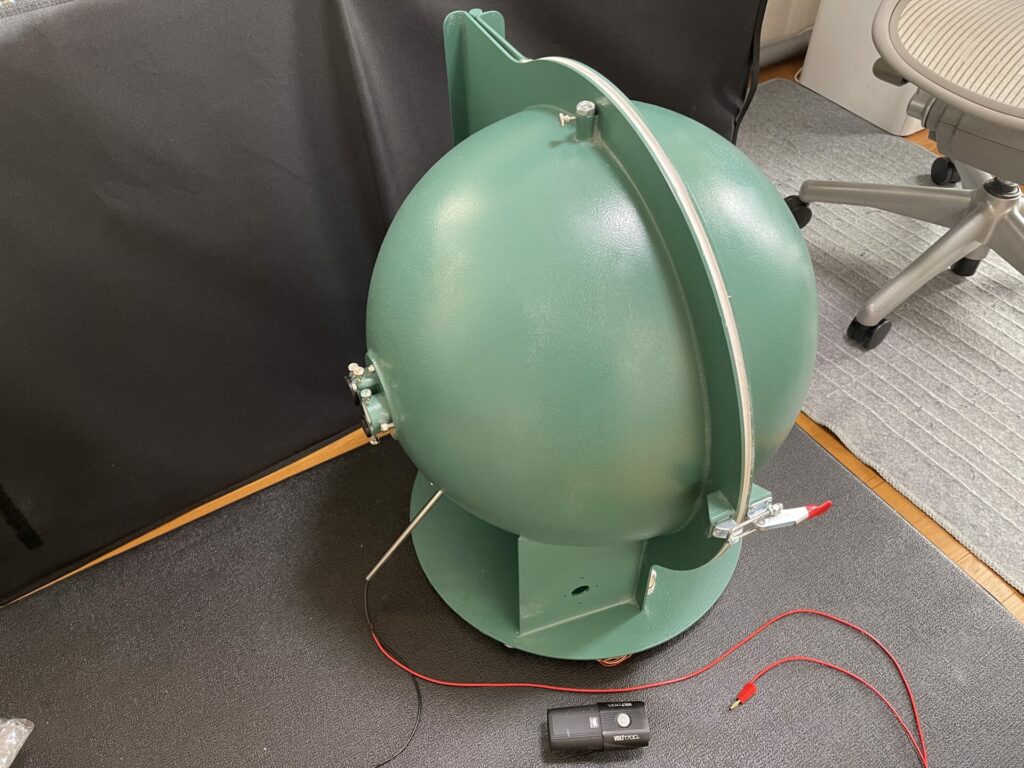
The inner surface of the integrating sphere is coated with highly reflective barium sulfate.
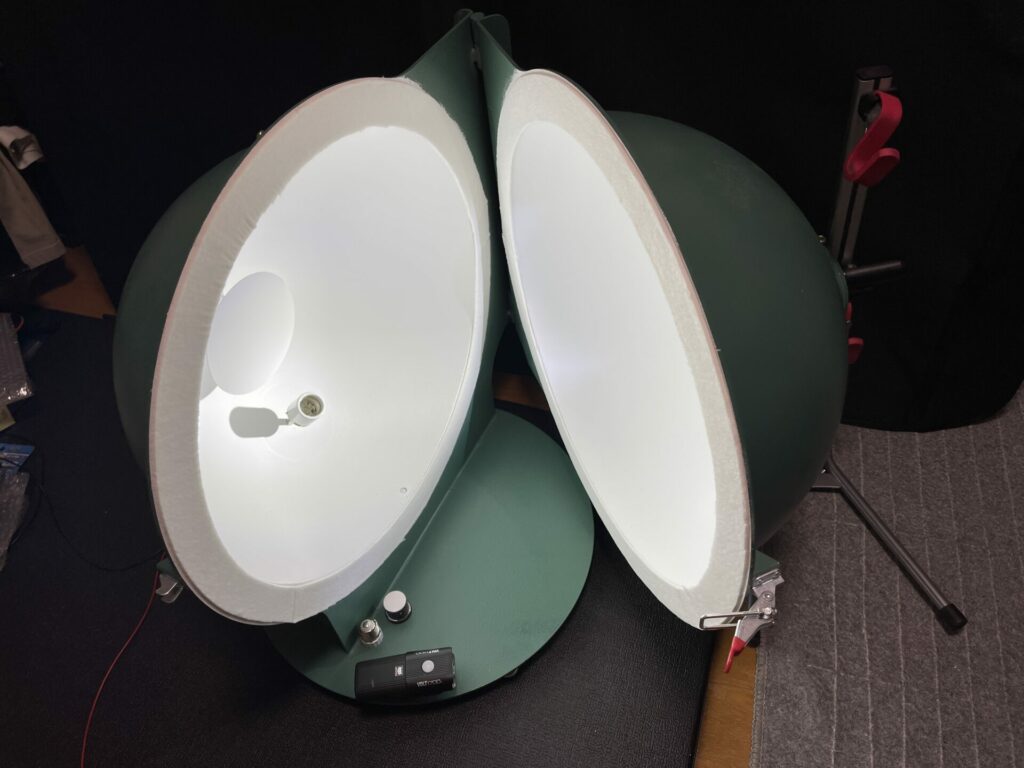
A measuring device called a “spectral luminous flux analyzer” is connected to the integrating sphere to measure lumens.
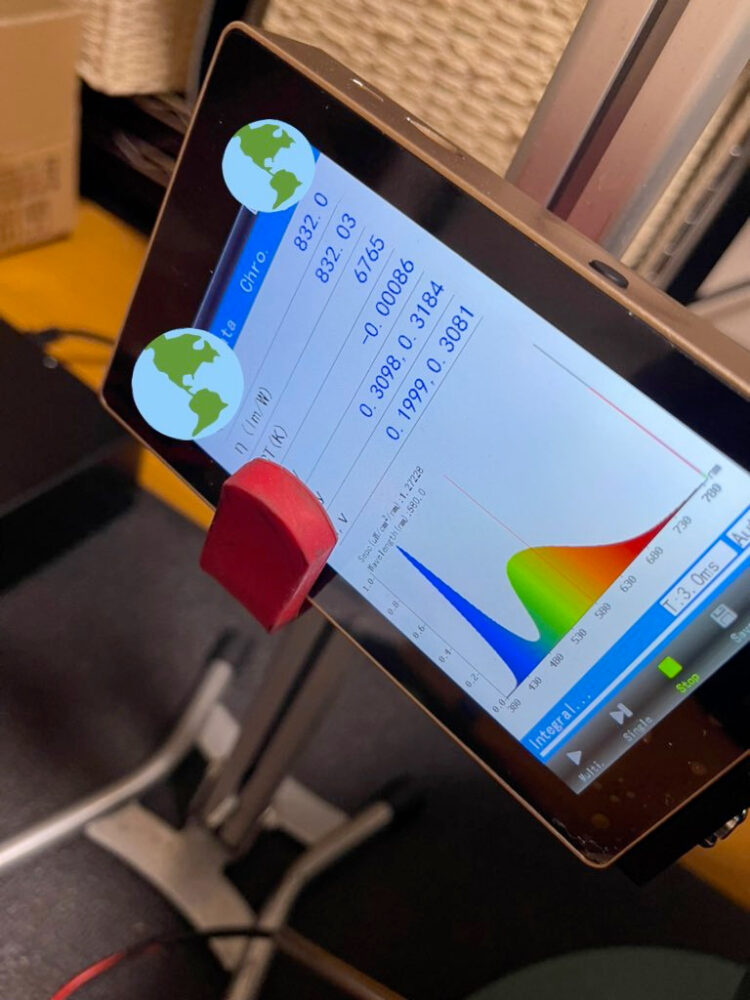
For Correct Measurement
Even when using an integrating sphere, changes in measurement conditions can cause deviations in lumen values.
To avoid deviations in the measured values, I make several efforts as shown below.
- The mounting position and angle of the light and the measurement device should be constant. (See (Remarks))
- The performance of lights and batteries is greatly affected by temperature. Therefore, I keep the room temperature between 20℃ (68℉) and 25℃ (77℉).
- Use new, I use charged batteries.
As a rule, I use lights and batteries that have not been used for cycling. - For alkaline battery-powered lights, I use batteries of the same brand, with a new production date and unused.
(Remarks) Placement of lights on the integrating sphere
According to the instructions attached with the integrating sphere, lights can be placed either “outside the sphere” or “inside the sphere” as shown in the figure below.
However, in practice, if the light is placed inside the sphere, the exterior of the light itself will absorb light.
Therefore, depending on the size and color of the light, the lumen measured will vary.
In particular, a lighting device with a black exterior absorbs light itself, resulting in lower measured lumens.
When I measure lumens, a lighting device is placed outside the sphere and light is irradiated into the sphere.
If the light is placed on the outside, it is necessary to take measures to shield the light.
A hole must be prepared to match the shape of the light. In fact, this process is quite time-consuming.

The analyzer is calibrated with a reference bulb provided by the measurement device manufacturer.
The following is a reference bulb. It has been verified in advance that it emits a certain lumen of light when a specific electric current value is applied, and the analyzer is calibrated with that light.
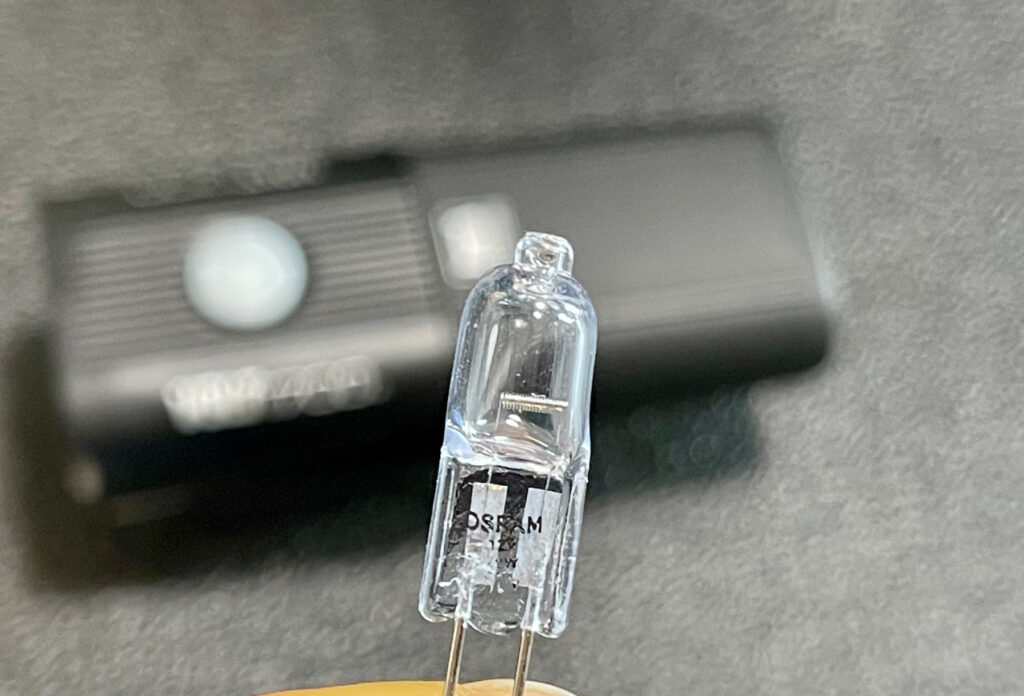

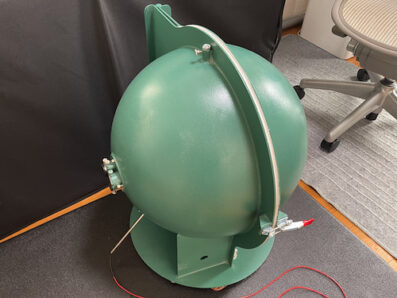

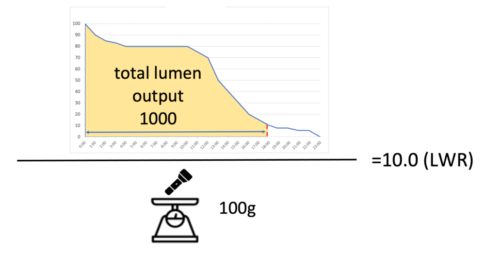
Leave a Reply